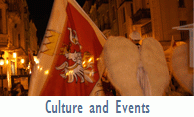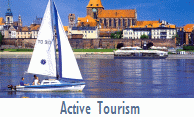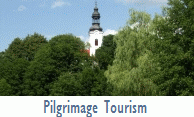|
|
On 6 December 1997, during the 21st plenary session of the UNESCO World Heritage Committee in Naples, the Medieval Town of Toruń was listed among UNESCO World Cultural and Natural Heritage sites.
The World Heritage List includes properties forming part of the cultural and natural heritage which the World Heritage Committee considers as having outstanding universal value, properties testifying to the great achievements of civilized man and those created by natural phenomena which deserve special protection.
The list was started by the force of the UNESCO Convention concerning the Protection of the World Cultural and Natural Heritage (adopted in Paris, 1972). To date nearly 180 countries of the world have ratified this document.
|
|
|
Toruń was founded in the medieval times (the Foundation Charter was signed in 1233 >>). Throughout the dramatic history of Poland, the city was fortunately saved from the considerable destruction. For that reason the city is abundant in monuments, many of which date back to the mediaeval period. Additionally, the significant number of the monuments was erected in accordance with the Gothic canon.
i  Suggested Reading: Suggested Reading:.bmp) Historical Monuments and Sights of Toruń here Historical Monuments and Sights of Toruń here.bmp) Historical architecture of Toruń here Historical architecture of Toruń here.bmp) History fo Toruń here History fo Toruń here
|
The authenticity of the mediaeval and Gothic skyline of Toruń was one of the arguments supporting the decision to add Toruń to the UNESCO List of World Heritage Sites on 6th December 1997. In the document written by local scientists, which was the basic part of the nomination to include Toruń to the List of World Heritage Sites, the Medieval and Gothic legacy was strongly pointed out in the following way:
- In Toruń, there were erected numerous mediaeval structures, many of which have been preserved to present times. All the buildings represent the magnificent achievements of brick Gothic architecture in Europe.
- Preserved residential buildings are the biggest and the best-maintained examples of Gothic residential architecture in Northern Europe.
- The unique spatial arrangement, preserved in a condition close to the original one, is a valuable source of historical evidence for the development of mediaeval cities in Europe.
- The Old City Town Hall assembles in inimitable way judicial, administrative and commercial functions.
- Toruń Old City Quarter combines the features of a riverside port city and a double city (the Old and New Town) with the characteristic of a fortress.
- In Toruń, regardless of its degree of independence, one can see the noticeable influence of the leading European art centres, such as Bruges, Ghent, and Lübeck. This fact is thought of as evidence for the existence of the cultural commonwealth of Hanseatic Towns
- In the Middle Ages Toruń witnessed many historic events. This city took part in the process of Christianisation and colonisation of Prussia, was the main intermediary in the Hanseatic Commerce with Eastern Europe, became the major centre of creating the sense of townspeople’s identity, and a place of signing the Second Toruń Treaty in 1466.
|
|
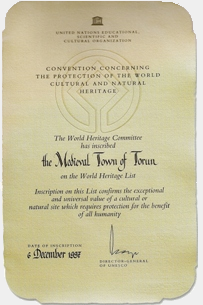
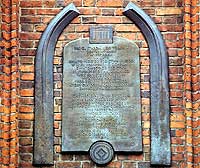
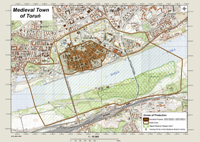
|
|
The report by a Lithuanian professor Jonas Glemza, who paid an expert visit to Toruń in October 1996, confirms the extraordinary high standard of Toruń Old Quarer. Professor’s opinions concerning the subject of nomination and remarks about the condition of the city became the basis for the final decision made by UNESCO Committee in Naples on 6th December 1997. The conclusions drawn by professor Glemza are the list of reasons why Toruń became the worldwide cultural property. The following are the most important remarks by professor Glemza:
- The valuable architecture of the historical city - mediaeval churches, the Old City Town Hall - represent the masterpieces of human craftsmanship genius. They meet all the requirements of mediaeval system of fortification (walls, gates, the castle ruins, the location of the Old and New Towns of Toruń)
- In Toruń, there are 6 monuments of class 0, 50 of class 1, and 270 of class 2.
- Toruń has been placed on a list of the seven Historical Centres in Poland.
- The Old and New Town are part of the nomination (both are the clear examples of mediaeval arrangement of town), so are the ruins of the Teutonic Knights’ Castle.
- The criteria for the nomination include: the history of the mediaeval city, its particular scientific developments, and the significance of the city for the Province of Pomerania.
- Toruń is an excellent example of a medieval river port, which used to connect Poland, Germany, Prussia, Scandinavia, and Lithuania.
- In the Old and New Town districts many authentic valuable Gothic, Renaissance and Baroque buildings have been well preserved (>>).
- Toruń has also a valuable double-ring system of the 19th century Fortrifications, erected by Prussians - a 19th century monument of a defensive architecture.
- Among other cities of the Hanseatic League, Toruń is a unique place, because here Nicolaus Copernicus, one of the greatest scientists of all times, was born.
|
|
The history of efforts to entering the city on this prestigious list goes back to 1986. Then on a resolution of the City Council the Civic Committee for the Toruń Historical Monuments Renovation was established. At the same time and on the occasion of this appointment the request to initiate proceedings that would lead to the entry the city in the UNESCO World Heritage Site started.
The purpose of the Committee was also lobbying the interests of Toruń in the state government authorities (among others Toruń was included into the list of 8 cities, which as the first had to get the materials centrally subsidized for upgrading monuments). The Committee also established contact with the authorities of Krakow, to take advantage of the local solutions and models.
However, the 10th Congress of the Polish United Workers' Party (the communist party which governed the People's Republic of Poland from 1948 to 1989) in 1986 failed to approve the article about the nationwide need to save the historical monuments of Toruń, in consequence of the programme that covered only the monuments of Krakow.
As a result of the Civic Committee for the Toruń Historical Monuments Renovation activity several historic preservation work was achieved.
In 1989 the Committee was abolished.
|
 UNESCO's Memory of the World Programme UNESCO's Memory of the World Programme |
|
|
|
Toruń Mediaeval Wax Plates
In addition to the World Cultural and Natural Heritage List UNESCO maintains Programme "Memory of the World Register". This registry contains of most valuable and important handwritten documents of all mankind, was founded in 1997.
At the meeting of the Polish Committee of the "Memory of the World" on 24 January 1997 the Polish objects were reported to the Register. The list includes, among others manuscript of Nicolaus Copernicus' De revolutionibus orbium coelestium (>>) work kept in the Jagiellonian Library in Krakow, and awaiting the entry is stored in Toruń's State Archives the Collection of Wax Plates of the City of Toruń in the years 1250-1530. This is one of the largest collections of wax tablets in Europe from the Middle Ages, with the largest number of polyptychs. The form and manner of recording is unique as well.
Wax tablets were a popular writing surface in the Antiquity and throughout the Middle Ages. They were used by individuals, students and merchants, as well as churches and offices mainly to record their income and expenditures. Their surface was reusable and the written test could easily be erased. In the 14th century they gradually began to lose their popularity to be replaced by parchment and, eventually, by paper. There are very few surviving tablets left all over Europe and the world and thus they are among the oldest manuscripts today. Particularly rare are the tablets formerly used in city chancelleries.
Beside Toruń, the largest Polish collection of wax tablets is stored in Gdańsk, including 4 polyptychs comprising 36 tablets, while the largest German collection of 6 polyptychs is located in Leipzig. Toruń collection is the world’s largest set of wax tablets from the same chancellery. Art historians maintain that Toruń oldest tablets were made and then decorated in workshops in Lübeck or the neighbouring cities in the second half of the 13th century. Thus the assumption that cities located in the 13th century did not have a chancellery is totally inconclusive. As early as the second half of the 13th century, Gdańsk, Elbląg and Toruń chancelleries kept their accounts recorded in a form of wax code books.
Wax tablets in Toruń were used for administrative purposes from mid-13th century until ca. 1530. The collection consists of 16 polyptychs comprising 127 small wooden boards. They were fastened by thongs or strings at the back, while the inside was covered by wooden plates, usually ornamented with floral or zoomorphic motifs. Particularly striking are those with chimeras, gryphons and basilisks engraved on the cover. The timber used normally came from pear, apple, linden, sycamore and oak trees. The plates were covered with dark-coloured wax, mainly beewax, bearing the test engraved with the stylus.
The styles were made of hard, sharp-pointed metal, timber or bone with a rounding nib. For erasing or removing the text spatula-shaped styles were used. The polyptychs were fastened with one or two leather belts. Their maximum size was 41.7 by 21.7 cm (length and width), while the minimal 25.5 by 13.2 cm. They were between 1.2 and 0.5 cm wide.
The contents of the wax tablets have already been read. They are covered by multilayer records, mainly those concerning city finance and describing all types of merchant transactions, such as market and industrial facilities fees, land use fees and property income of all sorts. There are also records of settling numerous liabilities and of different forms of debt repayment, as well as statutes and city council resolutions.
As the tablets suggest, one of the City Council’s responsibilities was that of a bank, granting loans and paying out income. They are generally well-preserved, which is the result of the conservation work led by Dr. Elżbieta Jabłońska under the supervision of Professor Alicja Strzelczyk at Nicolaus Copernicus University in Toruń, in the Institute of the Science of Historical Works of Art.
|
| Users' comments (18) | | 1/6 | choose sub-page: 1 2 3 4 5 6 from 6 |
| Kolkata Call girls, 2025-04-24 14:57:34 (202.8.114.198)
You can call us 24x7 hours. https://callgirlsguidekolkata.com/
| Call girls, 2025-04-24 14:56:47 (202.8.114.198)
Kolkata Call girls
service
services
independent
escort
escorts
| Lillian Queen, 2025-02-28 14:56:30 (89.45.7.118)
FINALLY I GOT MY LOST BITCOIN BACK ALL THANKS TO // THE HACK ANGELS RECOVERY EXPERT
I am out here to spread this good news to the entire world on how THE HACK ANGELS RECOVERY EXPERT and his terams help me in recovering my lost Bitcoin. I never thought I could get scammed of my Bitcoin , I never knew these investments were fake. I was depressed and in anger but all thanks to THE HACK ANGELS RECOVERY EXPERT for the help and professional service offered to me in my time of need. I invested $1.3 million in a cryptocurrency platform and found out it was a scam and I had no idea how to get my money back until I contacted THE HACK ANGELS RECOVERY EXPERT To anyone out there seeking to recover an
| | 1/6 | choose sub-page: 1 2 3 4 5 6 from 6 |
|
|
|
Curent local weather in Toruń  | temp. 7.3° C |
|
 Suggested Reading:
Suggested Reading:



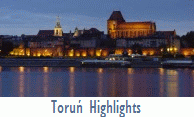
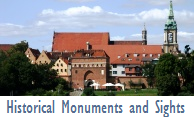
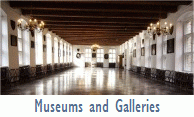
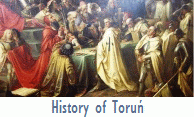
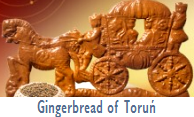
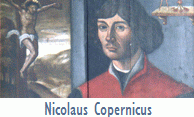
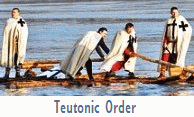

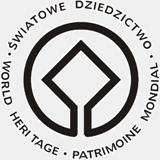



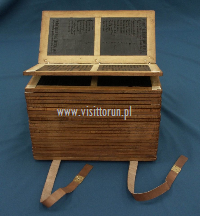
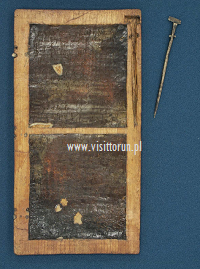
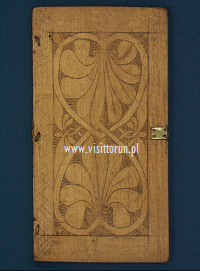
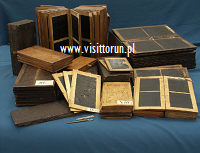
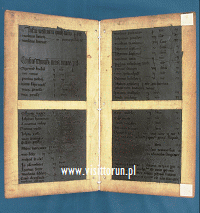
.gif)

